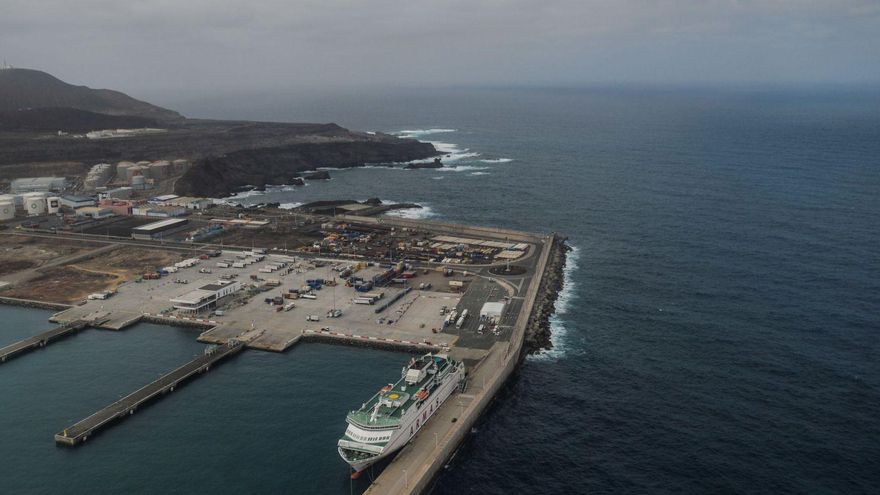
Las Palmas de Gran Canaria offers Nueva Pescanova facilities that meet all the technical needs of larval hatcheries, fattening tanks and the packing plant. The company has requested one of the largest plots available in the Port, with 52,691 square meters, to have enough space to build the two buildings that make up the farm, the breeding and production and the processing and storage. In fact, the total area to be built amounts to 62,079 square meters distributed over two floors, according to the documentation exposed to public information by the Port Authority of Las Palmas once the project competition process has been passed.
Fresh water
In addition to its five hectares of open-plan land, the large plot of the Africa dock guarantees Nueva Pescanova privileged access to the most precious asset that an aquaculture farm requires, water. Its location is designed to facilitate obtaining, from a point near the north of the La Esfinge dam, the 150,000 cubic meters that it will require each year. Once used and microfiltered, the water will travel to the interior of the dock, 280 meters from the Naviera Armas terminal. To fill the pools where the octopuses will live, an underwater horizontal flow intake will be built 260 meters north of the dike. The liquid will flow through it to the ground area driven by a pumping well.
The Port of Las Palmas was not the only location that Nueva Pescanova took into consideration in Gran Canaria to build its flagship project. The multinational company considered taking the farm to the north of the coast of San Bartolomé de Tirajana, in the town of Castillo del Romeral, but the advantages of this location were scarce compared to the capital.
One of the obstacles was found in the land necessary to start up the infrastructure, consisting in this case of two parcels crossed by a road that complicated the transfer of goods that will occur when the farm is in operation. The other, in the very conditions of the environment: compared to Puerto de La Luz, the human presence in this area is much more discreet. In addition, Castillo del Romeral is far from the container terminals that the company intends to use to transport most of the product to consumers once it is packed and frozen.
Without leaving the Canary Islands, Nueva Pescanova valued taking the farm to the Port of Santa Cruz de Tenerife, where one of the headquarters of the Spanish Institute of Oceanography is located, where the scientific research was developed that found the formula to achieve reproduction in captivity. of the octopus. The president of the Port Authority of the western province, Carlos González, suggested weeks ago that the company’s rejection was due to the nearby presence of a wastewater emissary. In any case, the distribution of the soil in the fishing basin was also decisive.
Electric bill
The subdivision in this case was even more intricate than in Castillo del Romeral, with the land divided into three farms, which made communication between areas quite difficult. Nor was it particularly convenient to obtain the supply of water and energy – 23,000 kilowatt hours per year – that the plant requires.
Nueva Pescanova also considered setting up the farm in Galicia, where octopus is not only a food, but an element of cultural identity. Although the Nueva Pescanova headquarters is located in the autonomous community with the highest per capita consumption of cephalopods – it more than duplicates that of the Canary Islands, according to data from the Ministry of Agriculture, Fisheries and Food – and the construction would be somewhat cheaper than in the Archipelago , in the long run it would not be a profitable facility. Octopus requires very specific conditions regarding the temperature of the water, so it would have been necessary to acclimatize it before using it.
Veterinary safety
The breeding and fattening of cephalopods in captivity is a pioneering activity in the world – until now it has only been achieved experimentally – that requires reinforced supervision, so the farm that the multinational Nueva Pescanova has proposed to install in the Port of Las Palmas will have a biosecurity plan reviewed by veterinarians. Among other aspects, it will include essential operating recommendations to minimize diseases that can affect octopus specimens. The freshness of the water is essential, so its physical and chemical conditions will be constantly monitored by automated systems to find a balance between animal welfare and crop efficiency. These controls will be especially strict with parameters such as temperature, salinity or oxygen levels, since they are critical to guarantee activity. | JCG
















